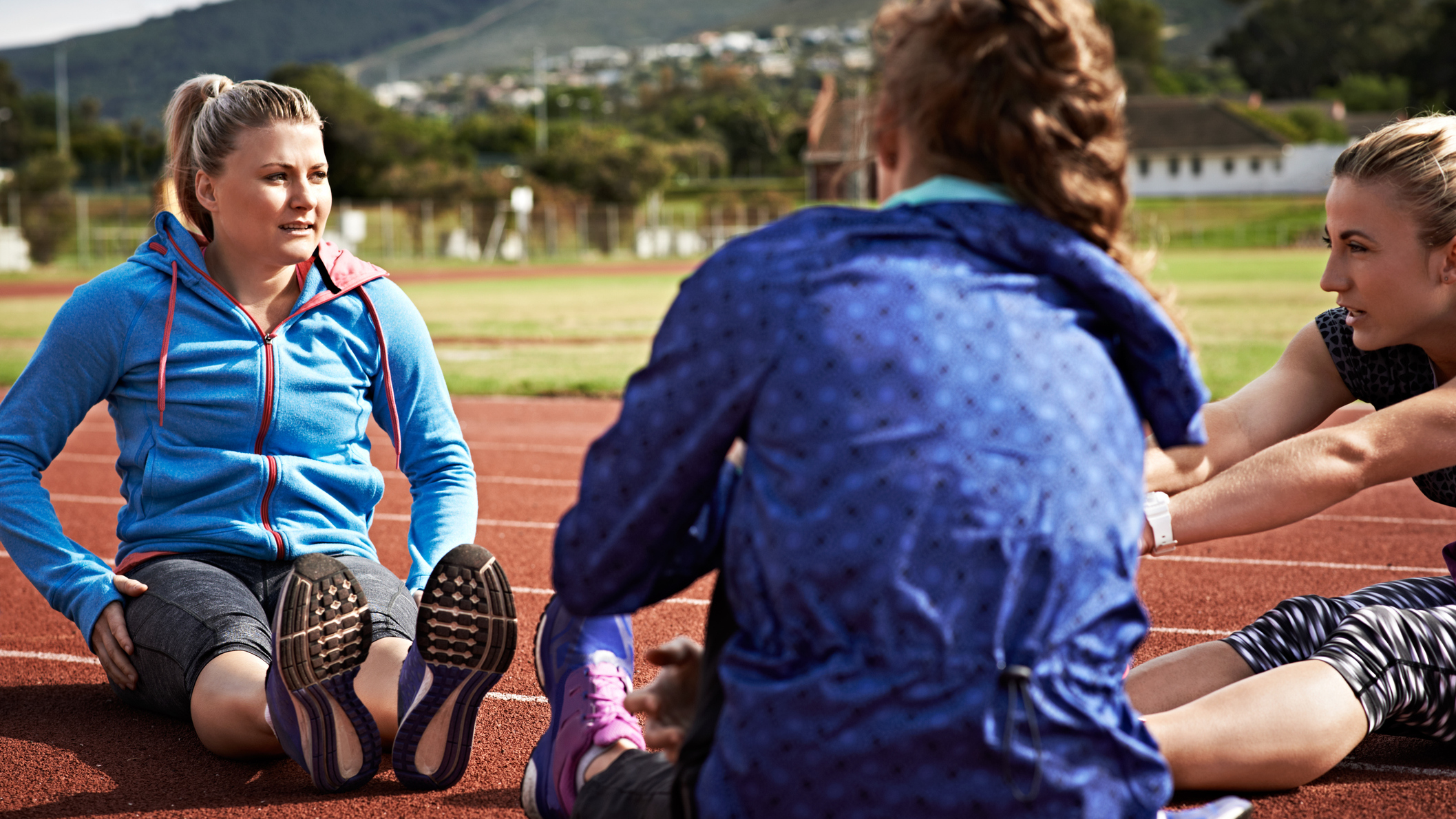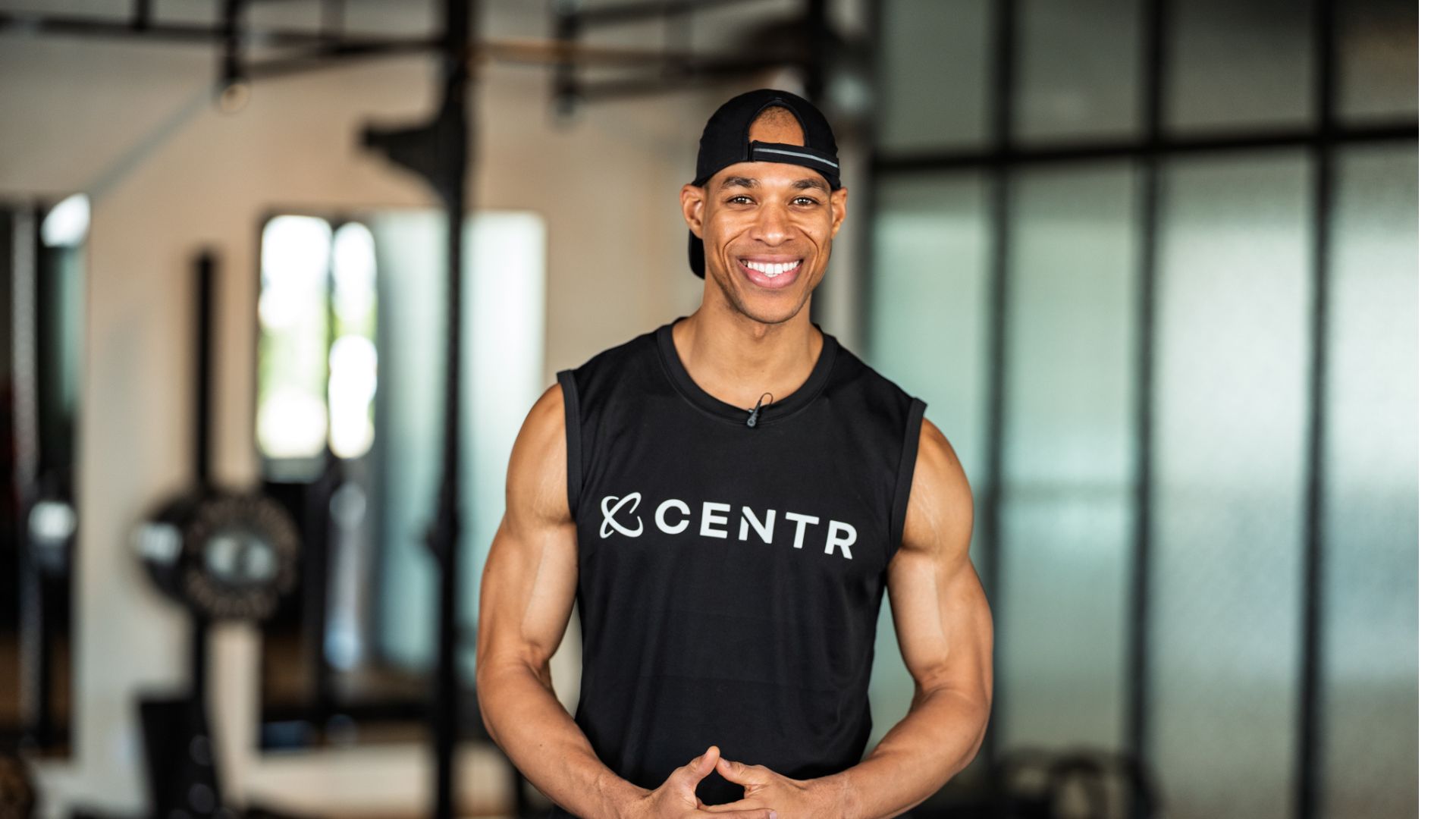A running coach says these three moves will make every run feel easier, no matter your age
Steal his warm-up routine and feel the difference in your next session

Rory Knight has run thousands of miles and crossed dozens of finish lines but there's one quick pre-run routine that he's stuck with over the years. He recommends everyone adopt it before a run, and in fact, he tells me, even non-runners should add it to their pre-workout warm-up.
It targets the hips—an area that can become tight and immobile due to a sedentary lifestyle—and involves three exercises that will gently stretch out sore spots, lubricate stiff joints and wake up sleepy muscles so that every run feels easier.
"Being strong, stable and mobile through the hips is paramount for running efficiency," says Knight, the director of fitness at WithU and Mvmnt, and the co-founder of run club Track Life LDN.
Prioritizing mobility and addressing tight hips is something Knight has had to learn the hard way. "I was always the guy when I played football [soccer] that my mates would laugh at, saying, 'Oh, Rory's doing his yoga again'. But I had to do all of this stuff or my body would seize up and my performance would suffer."
Taking a few extra minutes to warm up effectively is now something he credits with keeping fit and active as he's aged. "It's something I've always done and now that I'm well into my 40s I'm still able to perform the activities that I love. Looking after your hips really does pay off in the long run."
Use this mobilizing hip routine before your next run
A post shared by Rory Knight - Wellness Expert (@roryknightwellness)
A photo posted by on
This three-move drill is useful before playing a team sport, before a gym session or to simply unlock tight hips and hip flexors after a long day at work, but it's a non-negotiable part of Knight's pre-run routine.
"If your hip flexors are tight your glutes won't fire," says Knight. If your glutes are misfiring, you'll lack power. And if the muscles around your hips aren't activated, you'll lack stability, further compromising your running gait and how freely you move with every stride.
Get the Fit&Well Newsletter
Start your week with achievable workout ideas, health tips and wellbeing advice in your inbox.
Knight's pre-run routine will address each of these factors. "There are elements of stretching to create fluidity, along with activation and engagement of muscles that can potentially lie dormant from, effectively, sitting on your backside all day," says Knight.
Aim to spend between 1 and 2 minutes per exercise, easing into each movement. Play around with the tempo of each exercise and always listen to your body, Knight adds.
1. 90/90 forward fold
- Sit on the floor with your hands behind you for support, feet wider than shoulder-width apart and flat on the floor, and knees bent.
- Rotate your torso to the left side and drop both knees to your left-hand side.
- Aim to bring both knees to touch the floor and gently lean into the stretch on each side.
- Return to the start and repeat on the other side.
Knight says: "Start with a small range of motion. Go for 6-10 reps each side in total. Move to one side, take a breath or two, then sweep across to the other side, gradually increasing your range throughout the set."
2. Glute bridge march
- Lie on your back with knees bent, heels down and arms out wide for support.
- Press your lower back into the floor to activate your deep core muscles and tuck your tailbone under, then drive through your heels to lift your hips until your body forms a straight line from shoulders to knees.
- Keeping your glutes engaged, extend one leg, pause, then return it to the floor.
- Repeat on the other side, alternating sides with each rep.
Knight says: "The glute bridge march is dependent on how strong you are. If you're not very strong through the hips I would suggest swapping this for a regular glute bridge, then progressing to a single-leg extension but resetting by lowering your bum to the floor between each rep. Aim for 8-12 controlled reps with an emphasis on control. If you feel your glutes switching off that's a sign your hips aren't high enough."
3. Adductor rock backs
- On your hands and knees, extend one leg out to the side.
- Gently sit your butt back toward your heel to stretch the inside of your thigh.
- Ease back and forward, gradually increasing the stretch each time.
- Complete all reps on one side, then switch legs.
Knight says: "The leg movement in running is forward and backward but it's helpful to take a 360˚ approach to mobilize your hip joints and this move ensures you are open through the adductor muscles on the inner thigh. Weakness or tightness here can impact knee tracking and alignment so it's an essential move in my book. Done right it feels absolutely amazing."

Sam Rider is an experienced freelance journalist, specialising in health, fitness and wellness. He is also a REPS level 3 qualified personal trainer.
-
 I do these two things every day to stay fit and healthy, says the newest star trainer on Chris Hemsworth's fitness app
I do these two things every day to stay fit and healthy, says the newest star trainer on Chris Hemsworth's fitness appHere's how Centr's Korey Rowe trains for longevity
By Sam Rider Published
-
 I thought sports weren't for me, until I realised they're a game-changer for ticking off cardio
I thought sports weren't for me, until I realised they're a game-changer for ticking off cardioI swapped HIIT and running for tennis—and I've never felt better
By Alice Porter Published